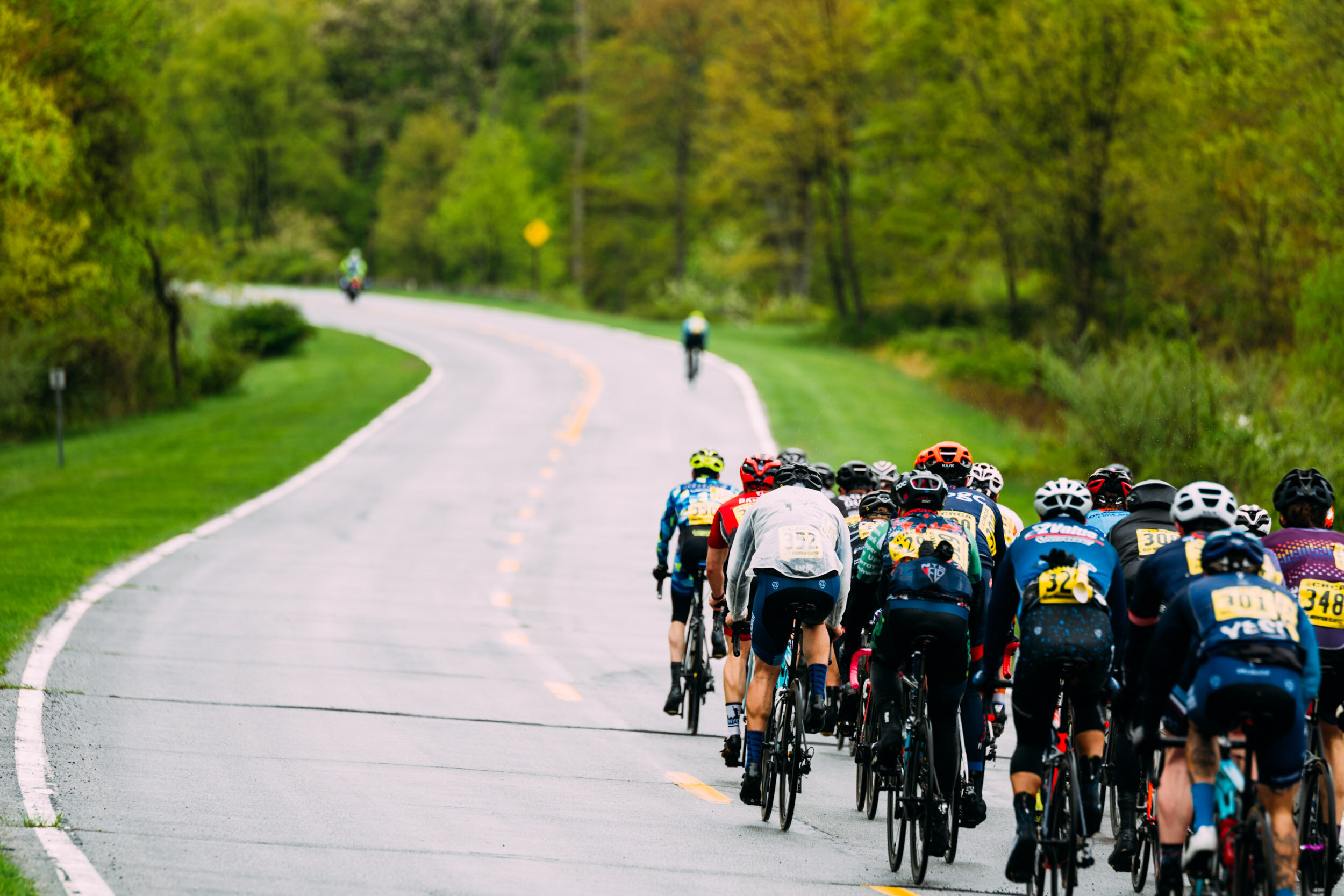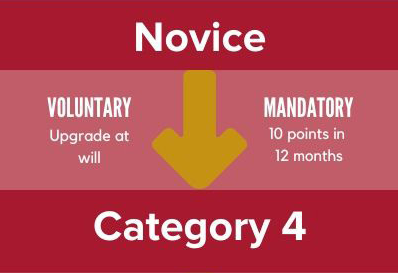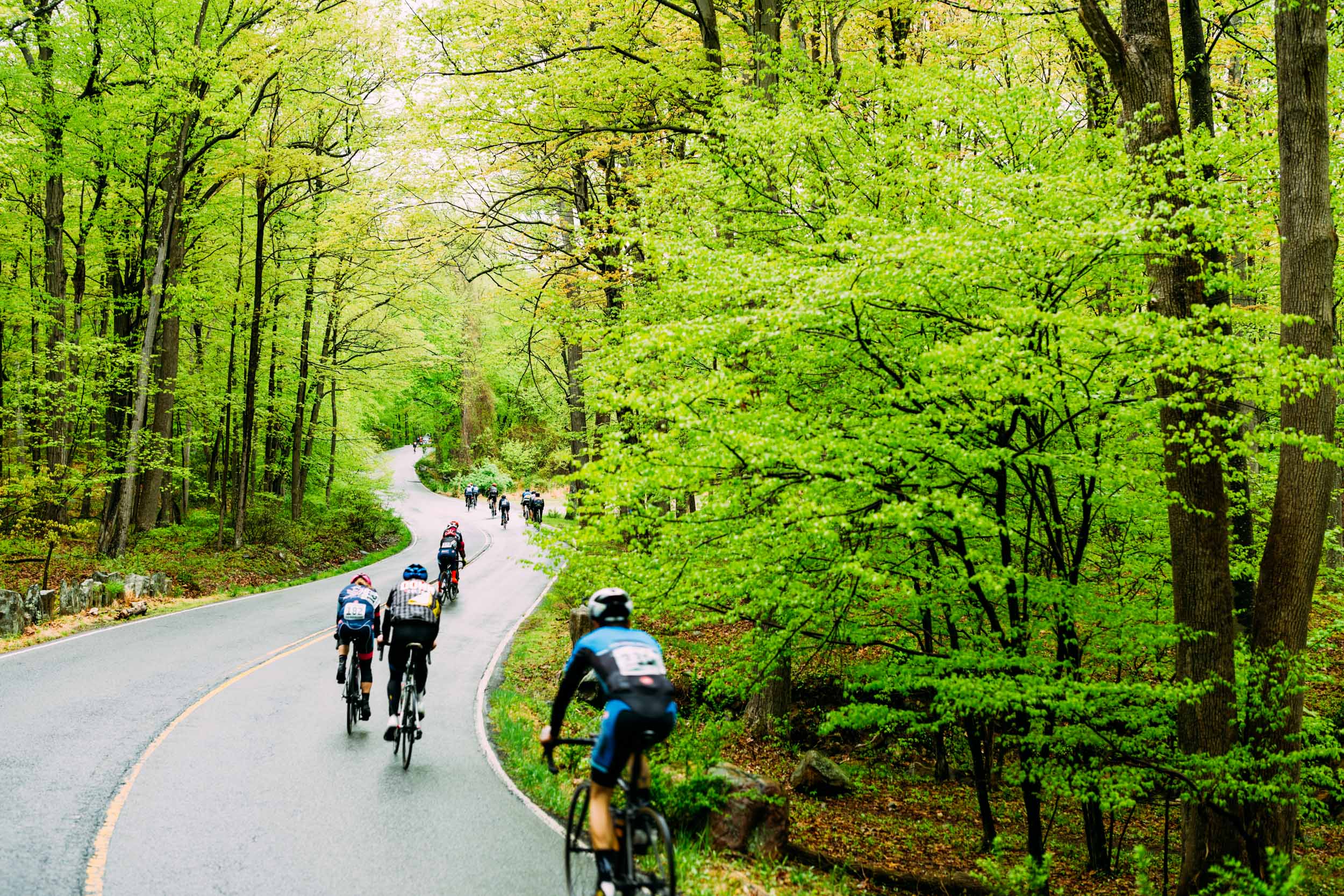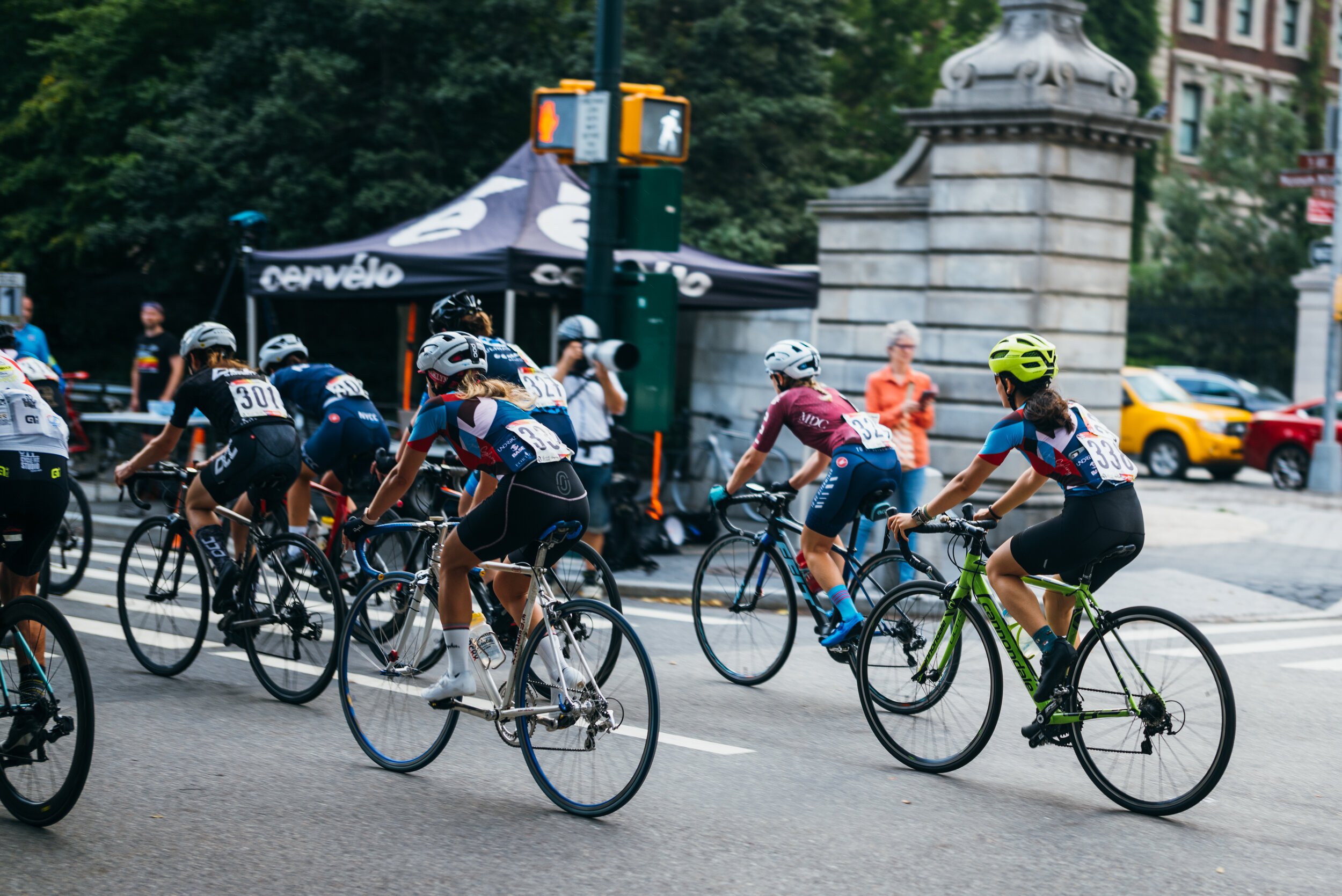The New USA Cycling Upgrade Rules: What We Know and First Impressions

It’s probably not a surprise that USA Cycling upgrades have been a popular topic on the Journal over the years given the sport, as it exists today, is largely constructed around the category system. The races you can participate in, the results you chase, and in some ways your progression through the sport are all tied into USAC upgrade requirements.
We have admittedly been critical of these upgrade requirements in the past, especially in the context of the New York City racing scene where the average new racer appears to last just one or two seasons before quitting the sport. But with new leadership at USA Cycling the USAC upgrade requirements have seen significant revisions for 2020. On our first impressions - which are dictated by the information publicly available on the USA Cycling website and guidance distributed to Local Associations in January - some of these changes appear significant.
Stay tuned as we walk through some of the changes that most catch our eye, and offer our first impressions as racers, race organizers, and former regional upgrade coordinators.
The USA Cycling Upgrade Changes That We’re Focused on
Simplified distance requirements
In our last journal entry on USAC Upgrades we expressed frustration about the length / complexity of the upgrade requirements, specifically with regard to the use of multiple points tables depending on race distance:
Is it harder to win a road race than a criterium? Sure, maybe. But does the sport really need two different upgrade tables for each discipline, to say nothing of a third for stage races that only applies to Category 3-2 and Category 2-1 upgrades and yet another to detail minimum event distances? At what point is the complexity of upgrades generating more confusion than it’s worth?
Well good news folks: all of the complexity around distances is officially gone - there is a single points table for road racing regardless of distance! This means no more trying to remember whether that race from last year qualified as a criterium or a road race and no more trying to calculate points across multiple tables. This also eliminates the very high minimum road race distance for higher category upgrades (i.e. 80 miles for Men Category 1 upgrade points).
Simplified number of starters
One of the most complicated elements of upgrading under the old system was always figuring out how many starters actually counted for upgrade purposes while racing in a combined field, like Category 3/4. There is more good, simplifying news here as the number of starters is the now the number of starters, regardless of category. If you line up with 25 other racers on the start line, that is how many will count for upgrade points, even if it is a combined field and half of the riders are a category below you. This is going to be most significant for riders who participate in combined category fields where a large number of starters formerly did not count for upgrade purposes (i.e. doing a Category 3/4 race as a Category 3).
more reasonable expectations around pack finishes
While upgrades to Category 3 have been permitted on the basis of pack finishes for some time, the hurdle under the old USAC upgrade policies was particularly burdensome: requiring either 10 top ten finishes with fields of at least 30 riders or 20 pack finishes with fields over 50 riders. Both field size requirements could prove difficult to hit, particularly for women’s fields, and the new upgrade policies appear to loosen this strict field size requirement for Category 3 pack finish based upgrades in favor of a more flexible approach. While we haven’t seen an explicit definition of what represents a pack finish under the new guidelines, the clarification sheet distributed to Local Associations reads:
This will require some flexibility and judgement on the part of the person doing the upgrade. The goal here is to reward those who are consistently finishing with the main competitive group–even if not capable of winning/placing on the podium. We are looking for people who show the fitness and skills to finish with the main group
Deeper Points Table for large races
The USA Cycling upgrade points table now goes deeper for large races. The old points table cut off at 50+ starters, but now the USAC upgrade points table for road goes to 70+ with points 11 deep scoring for those larger races. While the impact won’t be as significant for regions where average field size is smaller, for areas like New York City this should equate to more upgrade points available in a significant number of our races (especially for Men’s fields that can reach 90+ riders on a regular basis).
Category 5 = ‘Novice’ and new ‘at will’ upgrades to cat 4
The development categories are also seeing significant change with ‘Category 5’ being renamed ‘Novice’ and perhaps more importantly, an ‘at will’ upgrade option to Category 4. Meaning a ‘Novice’ rider can self-upgrade to Category 4 whenever they want. Given the sheer number of riders coming into the sport as new racers in a given year, this is the change that perhaps impacts the largest number of USA Cycling racers.
Our First Impressions of the New USA Cycling Upgrade Rules
Simple = Good. As a starting point, attempting to simplifying the upgrade rules and calculation gets an A+ from us. The complexity of the old upgrade system was one of our major points of critique, particularly in the context of a sport that already has enough barriers to entry. So all good there.
Upgrade policy roll-out / communication needs improvement. We think USAC could do a better job rolling out and communicating the new upgrade policy to members and stakeholders, and give this aspect a C. While we were aware that changes to the old upgrade policy were coming, we only learned that they went into effect, and were already posted on the USAC website, through word of mouth. We also had (and heard from fellow racers) a lot of initial questions about the new policy due to the lack of detail on how calculations worked (especially in comparison to the old system). We have since seen a copy of an FAQ document that USAC shared with Local Associations, which provides much needed additional guidance and answers many of these questions. We think some version of this clarifying document should be shared with members and clubs, and probably should have been shared as part of the roll-out.
Creating a true introductory category: A lot depends on the field structures that race directors use, but with significant revisions to what was known as Category 5 and a lower bar for upgrades (deeper points table, changes to starter counts) we think the new rules adjust category alignment in ways that potentially improves racer retention in a sport that desperately needs more participants.
Starting with nomenclature: the switch from ‘Category 5’ to ‘Novice’ may seem small, but given the category system is unique to USA Cycling racing, anything that simplifies the ‘first race’ experience for new riders gets an A+ in our book.
More importantly, we think ‘at will’ upgrades from ‘Novice’ to Category 4 are essential in ensuring that ‘Novice’ is actually an introductory race experience. We have all seen new riders show up to a Category 5 race where a former rower/running/elite athlete is completing their mandatory 10th race before upgrading to Category 4, leaving a wake of dropped riders with miserable experiences in their wake. The new rules seem to address that, with the hypothetical overpowered Category 5 racer able to do an ‘at will’ upgrade to Category 4 whenever desired, thus removing some power from the front-end of the ‘Novice’ field and hopefully making it a more appropriate beginner racer experience.
Lowering the bar for upgrades: significantly, while the Category 5/Novice changes are most noticeable, with think the lower bar for upgrades will also shift category performance ranges further up the ladder as the fastest riders can hypothetically progress out of any given category faster. Sandbagging is sure to remain a contentious topic, but if implemented well, we think all of the middle-range categories could downshift slightly in speed, ensuring a better race experience for those at the middle-to-lower end of a given category. As one TBDer put in during our Slack discussions:
As a Cat 3 with a mountain of fitness to rebuild, the “softening” of the requirements / Category 3 field definitely helps with the “oh no am I ever going to be competitive again” that’s always in the back of my mind when thinking about bikes
Putting this in context, under the old system it might take a very high performing rider who never finished below 7th eighteen races to get the required 20 points to upgrade to Category 3, particularly if the local area used a lot of combined Category 4/5 field structures. Depending on the number of races available in their area, getting these eighteen races complete could take two full seasons — even for a rider than never finished below 7th in this hypothetical:
In comparison, under the new upgrade rules, this same rider with the exact same results may be able to upgrade to Category 3 after eight or fewer races, thanks to the combination of an earlier ‘at will’ upgrade out of the new Novice category as well as higher points tables for the Category 4 races, particular in combined fields (this hypothetical also doesn’t take into account the deeper points table for large races). In fact this hypothetical rider could have earned a mandatory upgrade in ~1/3 fewer racers than it took to earn a voluntary upgrade in the old system.
In a similar vein, we like the relaxed standards around the number of starters required for pack finishes while completing a Category 4 to Category 3 upgrade. In our mind, if you lack the kick required to finish ‘in the points’ but are consistently finishing in the pack across 20 races (that’s a lot of races!) then you probably deserve an upgrade even if those races didn’t have the 50 starters required under the old rules. This is particularly true for women’s fields where we would guess the majority of races have < 50 starters. If anything, we wonder whether there should also be a ‘pack finish’ based option added for Category 2 upgrades - particularly for racers who face a lot of combined fields we could see “30 pack finishes in fields with 10 or more riders of a higher category” being a reasonable standard and one that would be more equitable for women racers who often face combined P/1/2/3/4/Novice or P/1/2/3 field structures (more on this point below).
Riders upgrading through the categories more rapidly, as predicted in the hypotheticals above, admittedly creates some fear around bike handling and crashes. But quantifying that risk is a challenge and our initial inclination is that allowing racers to progress more rapidly toward racing against their true peers (which seems to be a key tenet behind the existence of the category system) is a net positive for the new upgrade rules.
Category 3 and 4 Women’s license holders may still struggle to earn upgrade points. In the current landscape, where many race promoters offer only one combined Women’s field (aka W Category 1/2/3/4/Novice), Category 4 and 3 Women’s license holders may still find it difficult to upgrade via points. Consider this: if a combined field is scored based on raw finish across the line (rather than with separate scoring by category) then a lower category racer needs to beat higher category racers in order to earn upgrade points (i.e. in a Category 1/2/3 race, a Cat 3 racer will need to beat Cat 1/2 racers in order to earn points toward a Cat 2 upgrade). The alternative is to provide separate scoring by category, but in smaller fields the turnout may be insufficient to meet the minimum number of starters required to award upgrade points. As a result there are a lot of unknowns about how USAC’s new upgrade policy will impact Women’s racing, with much of the outcome reliant on how individual race promoters structure and score their races. More flexible definitions around pack based finishes should help when it comes to Category 3 upgrades, but more broadly we hope that promoters also do their part with a thoughtful approach to field field structures and scoring options to ensure a more equitable and enjoyable experience for lesser represented categories.
Race field structures matter as much as upgrade rules. In addition to the combined field points raised above, it is also important to recognize that when race directors run combined categories the impact of allowing high performing riders to upgrade more quickly can effectively be offset by field structure (i.e. a high performing Category 4 who upgrades to Category 3 would still race in the same field if a combined Category 3/4 structure is used). This is particularly true for Women’s racing where combined categories are the norm in the sport today - a Women’s license holder who is cracking terrific results could in concept upgrade faster under these new rules, but if the only field on offer is one combined Women’s Open Field (aka Category 1/2/3/4/Novice) then the overall race experience isn’t going to change under the new USAC policies - the remaining Category 4 riders will still be forced to compete with higher category/faster riders.
Everything is retroactive. Keeping with the simple is good theme, all of these changes are retroactive (subject to the 36 month look-back period in some cases), meaning you don’t have to try to calculate your points under the old system. In fact, with these changes some riders may have already qualified for the upgrades that they finished last year chasing. Two of our racers fit this description - so if you were close to an upgrade, check your points!
Parting thoughts
Are these upgrade changes going to single-handedly change the overall trend of a smaller sport? We don’t think so. And we’re sure the lower bar for upgrades will provoke some ‘I walked uphill in the snow both ways to school’ style angst. As will the fact that these new rules were only rolled out in January, just weeks ahead of the start of the race season with lots of potential retroactive impacts. But overall, our first impression is that these are good changes that could led to a better new racer experience via real development opportunities at the Category 4/Novice level while also improving rider retention by creating a more normal and achievable path to upgrades. And anything that results in more racers (and more sustainable races) is a good start in our book.
Full disclosure: these are just our first impressions and since racing hasn’t started on the East Coast, we have yet to see the practical impact at the races. USAC has also indicated that they may tweak the policies over time. As such, we reserve our right to change our opinion, and we’ll follow-up with additional thoughts as appropriate.
A New York City based cyclist and sometimes photographer. Part adventure rider, part crit racer, and fully obsessed with an English bulldog named Winifred.
Instagram: @photorhetoric
E-mail: matthew@tobedetermined.cc








